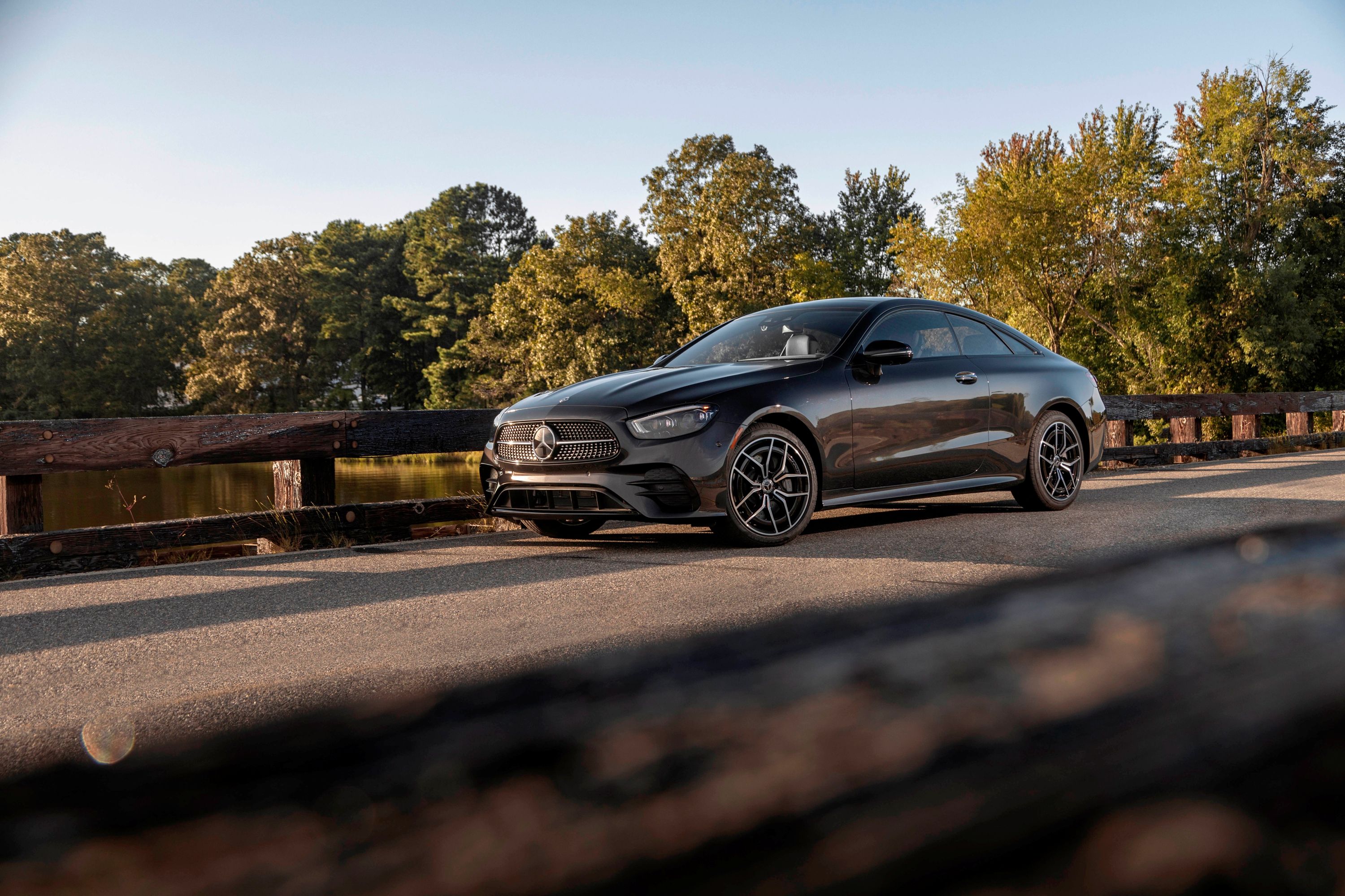
The Mercedes-Benz E-Class is one of the stalwarts of the German automaker's range. While not as sporty as the C-Class or as pioneering as the S-Class, the E has always occupied a pleasing middle ground between the two. And, while the sedan is the foundation of the range, Mercedes has chosen to celebrate the more stylish E-Class coupes and cabriolets with a nostalgic look back at these less practical, but more stylish alternatives at the premium end of the market.
These two-door E-Class models' roots can be traced back to the Stroke/8 Coupe (designated model series 114) of 1968. Only available with six-cylinder engines, the range-topping 250 CE produced 150 horsepower and a top speed just short of 125 mph, an excellent achievement considering the time period. Decades later, it remains a beautiful design with distinctive frameless side windows and those familiar wheels with a center section painted in the same shade as the rest of the car.
The 114 was followed by the modernized 123, which debuted at the 1977 Geneva Motor Show and for the first time introduced a four-cylinder option in the 230 C. But it wasn't until the 124 that the E-Class badge found its way onto a coupe for the first time, a move made in 1993, coinciding with the range's facelift - some six years after the car was first revealed.
The 124 played a big role in cementing Mercedes' reputation for solidity and reliability, despite it introducing a number of new technologies. In 1991, the first cabriolet to the segment was introduced, with the fabric retractable roof returning to a Mercedes for the first time in two decades. An E36 AMG version of both the coupe and cabriolet set the tone for the raft of fire-breathing Mercedes-AMG coupes we have today.
Just as quickly as the E-Class badge appeared on two-door Mercedes models, it took a hiatus after the CLK was launched at the 1997 North American International Auto Show. Although it borrowed styling elements from the E-Class (most notably the distinctive four rounded headlights), its underpinnings were based on the C-Class. The change in badge didn't stop the CLK from proving a huge success, with over 340,000 coupes and cabriolets sold.
After the departure of the CLK - and such gems as the insane CLK DTM AMG - the E-Class coupe and cabriolet returned with the stunning 207 series. Prior to being facelifted, this was the last E-Class to feature the individual headlamps, a styling cue that did well to set apart the E from other Mercedes models. The absence of a B-pillar harked back to the classic Stroke/8, but in all other ways, the 207 had dramatically moved the game on.
By this point, Mercedes' AIRSCARF provided lavish neck-level heating in the cabriolet and an unstressed E500 V8 with 388 hp provided the perfect motivation for this stylish boulevard cruiser.
Our favorite of the lot? It's hard to look any cooler than pulling up in a mint 124 cabriolet. It can't keep up with today's E-Class, but it demands respect. Mercedes should be rightfully proud of a model line that has precious few blemishes - each generation of the E-Class coupe/cabriolet were utterly desirable, elegant chariots for a style-conscious clientele.
